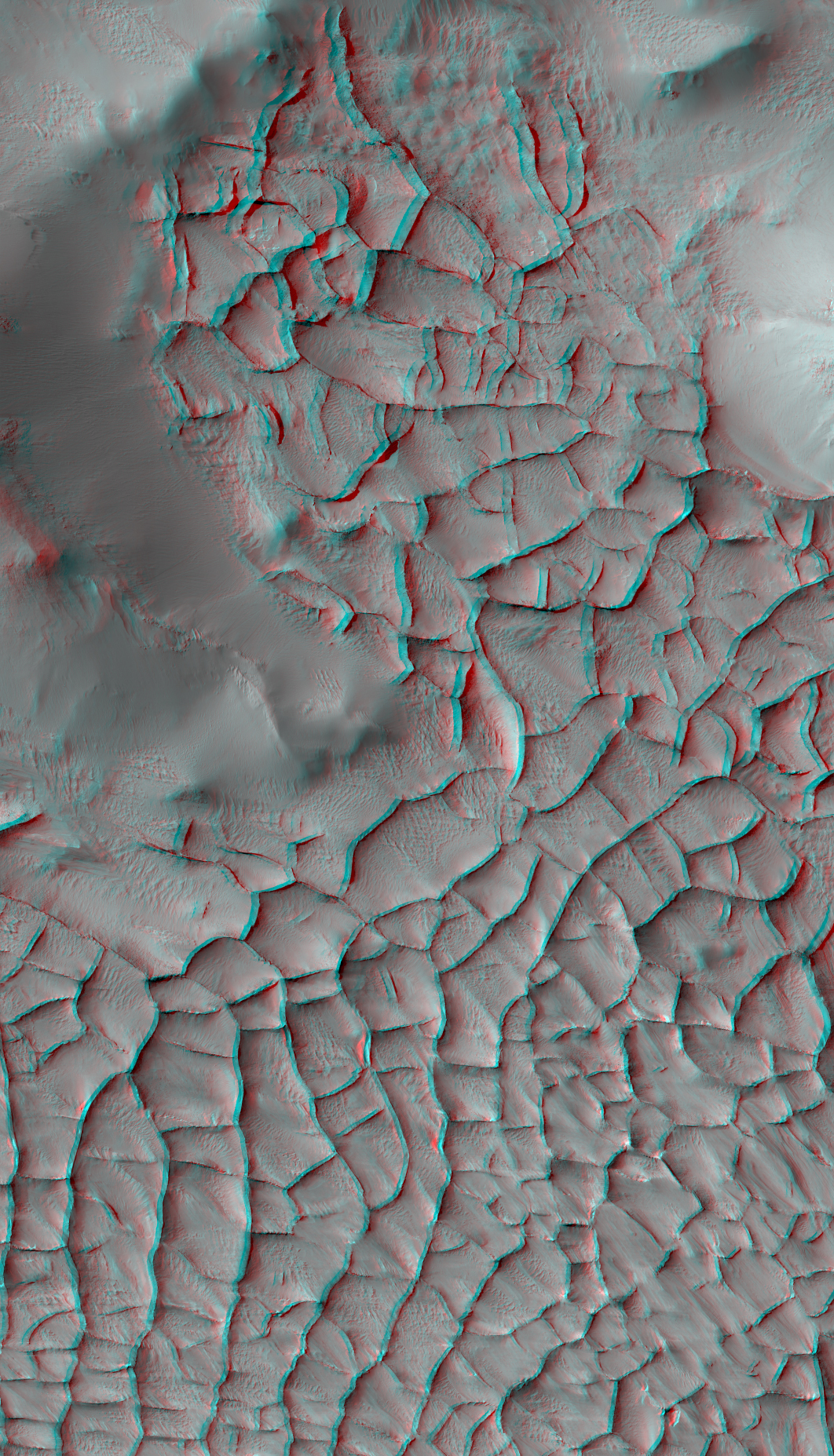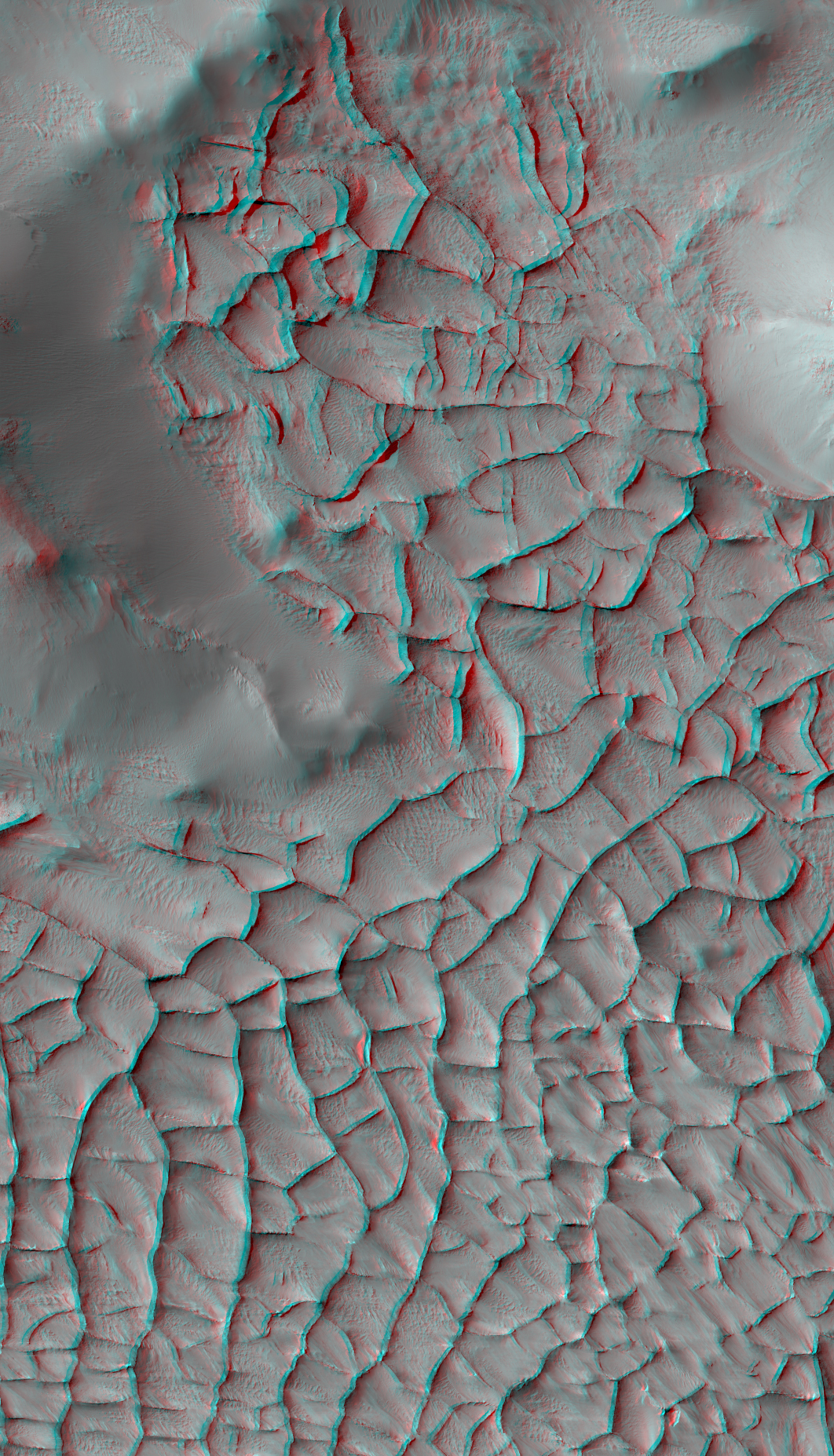Blade-Like Martian Walls Outline Polygons (Stereo)

| Credit | NASA/JPL-Caltech/Univ. of Arizona |
|---|---|
| Language |
|
This stereo view shows part of an area on Mars where narrow rock ridges, some as tall as a 16-story building, intersect at angles forming corners of polygons. It appears three-dimensional when viewed through red-blue glasses with the red lens on the left.
The area covered in the image is about 1.9 miles (3 kilometers) wide, in the Gordii Dorsum portion of the Medusae Fossae region of Mars. This stereo view combines two observations from the High Resolution Imaging Science Experiment (HiRISE) camera on the Mars Reconnaissance Orbiter. Figure A is the left-eye image, from HiRISE observation ESP_018548_1910 ESP_018548_1910. Figure B is the right-eye image, from HiRISE observation ESP_017348_1910 ESP_017348_1910. The location is 10.8 degrees north latitude, 212.2 degrees east longitude.
North is up. Note the afternoon shadows cast by some of the walls.
These ridges likely formed as lava that hardened underground and later resisted erosion better than the surrounding material. From ground level, they would resemble hardened-lava walls on Earth such as in the image at http://photojournal.jpl.nasa.gov/catalog/PIA21266.
The University of Arizona, Tucson, operates HiRISE, which was built by Ball Aerospace & Technologies Corp., Boulder, Colorado. NASA's Jet Propulsion Laboratory, a division of Caltech in Pasadena, California, manages the Mars Reconnaissance Orbiter Project for NASA's Science Mission Directorate, Washington. Lockheed Martin Space Systems, Denver, built the orbiter and collaborates with JPL to operate it.

